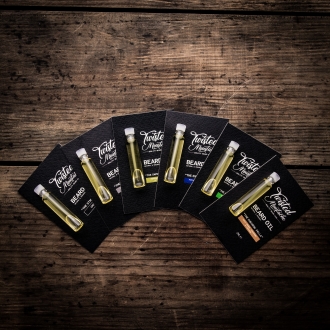How Do Electric Razors Work?
By Jack Shaw (Guest Post) | Last updated 31st July 2024
Mk2010, CC BY-SA 3.0, via Wikimedia Commons
Electric razors have become commonplace for shaving because of their speed and convenience. While traditional devices are great, people often gravitate towards an electric shaver if they have limited time and other things to do.
While purists may stick to old-school beliefs and use a straight razor, the electric version is here to stay. How do electric razors work and are they better than their manual counterparts? Here’s your comprehensive guide to electric razors.
How Do Electric Razors Work?
Electric razors only take a few moments to pick up and turn on before you start shaving. What goes on inside the device? Here are nine integral parts and pieces for your electric shaver.
1. Blades
The most important part of your razor is the blades. Electric shavers contain numerous tiny blades to cut your facial hair as closely as you’d like. These blades rotate in circular motions when you turn the razor on.
The type of blade you get depends on your device. Most electric razors are rotary or foil, so your preference will determine which is better for you. Rotary razors are better for big beards because they work well with thicker hair. If you have a less substantial beard, you might be better off with a foil shaver because of its thin blade.
The better blade also depends on your preferred shaving motion. Foil blades are more straightforward because they go back and forth quickly on your face. Conversely, the rotary razor provides better manoeuvrability around your face.
2. Trimmer
While you can shave with the blades, electric razors also let you use a trimmer. This piece is on the back of your electric razor and typically opens and closes with a button.
Trimmers are great for shaving your moustache and other areas in need of special attention. They also give you more control when you have a specific preference for shaving. While not as detailed as a standalone trimmer, the ones with your electric razor get the job done.
Razors are best for short beards and leaving stubble on your face. Beard trimmers with no guard may work better if you have a lot of facial hair.
3. Motor
Your electric has more in common with your car than you might think. Both machines use a motor to propel themselves and get going. However, the razor’s motor has less horsepower than your V-8 engine.
The motor propels the blades and sends them into a spinning frenzy, helping you get the cutting action on your face. This part typically contains a direct current (DC) motor with batteries to ensure you have a working device.
4. Battery
Another similarity between your car and electric razor is the battery. Most electric shavers require at least one AA or AAA battery inside to power the motor.
Thankfully, you don’t have to replace the batteries every few weeks with your razor. Modern devices let you recharge the batteries by plugging your razor into an electrical outlet. These small batteries usually provide 1.2 or 2.4 volts, depending on your razor and how fast you need the motor to work.
Rechargeable batteries are one reason why electric razors are convenient. Imagine you’re on summer holiday in another country. Your electric shaver is handy because you don’t need to venture out for batteries — you just need to plug in the charging cable to give your razor more power.
5. Circuit Board
The heart of your electric razor is the circuit board. This mechanism connects the wires, powers your motor and allows for recharging. Without a printed circuit board, you wouldn’t have a functioning razor. The board has numerous tiny resistors, inductors and capacitors to make your electric wiring work.
6. Body

https://moo.review/best-electric-shaver/, CC BY 2.0, via Wikimedia Commons
The outermost part of your electric razor is the body. This section is important for comfort while shaving because your hand needs to hold it for an extended time.
Ergonomic bodies help your grip while shaving, so find the most comfortable handle for your fingers. Larger hands may require a more substantial razor body to make shaving easier.
The body is where you’ll find the power button for most electric razors. Additionally, you may see the battery level displayed on the front. This feature makes it easier to know when your device needs a charge. The last thing you need when preparing for a date is a dead battery.
7. Gaskets
Why are many electric razors usable in the shower? You can thank the gaskets inside your razor. These tiny seals protect your razor from moisture by preventing the water from seeping inside. The O-rings help your razor stay intact despite the constant vibrations.
8. Brush
Electric razors require little maintenance, but you will need a brush to clean them up. The shaver removes hair from your body and traps it underneath the blade. The easy way to clean is to press the button and lift the blades, letting the hair fall out.
However, you can further your electric razor maintenance. Specially designed brushes will meticulously clean the head of your razor and dig between each crevice.
9. Screws
It’s hard to discuss an electric razor without the screws inside. These tiny pieces hold your shaver together and prevent it from falling apart.
Most modern razors use stainless steel because they prevent water damage and rust. Your razor likely has steel mixed with metal compounds to ensure your blades don’t rust over time.
Do you like shaving in the shower? Stainless steel means you can take your electric razor under the water and not worry about corrosion.
Who Invented the Electric Razor?

Asavaa, CC BY-SA 4.0, via Wikimedia Commons
If not for the electric razor, people might still use flint blades and water like the Egyptians. When did the first non-manual blade arrive?
Go back to 1928 when Jacob Schick patented the motorised razor. Schick was an American-born military officer who developed the dry razor to avoid using water.
Alaska’s unforgiving cold climate meant warm water was scarce, thus making shaving uncomfortable because of the cold. Imagine trying to stay warm but constantly splashing cool water on your face.
What was Schick’s solution? His military experience gave him the idea of a repeating razor. This device would reload by itself and use a tiny motor to provide continuity when shaving.
The U.S. granted Schick his patent in 1930, and his razor company became a terrific success. Nearly a century later, Schick razors are still available at stores selling shaving products.
Building on Success
While Schick’s razors were important, other inventors seized the opportunity for improvements. For instance, Alexandre Horowitz of the Netherlands invented the rotary razor in 1939.
The Belgian-Dutch engineer created the shaver for Philips. This health technology company labelled the razor as the Philishave and called it “the cigar” as a nickname.
Later inventions gave the electric razor rubber and other materials to make it more user-friendly. Additionally, modern versions of the electric shaver let you use it in the shower and when your face is wet.
Are Electric Razors Better Than Manual?
Do you use an electric or manual razor? This debate is popular among the beard grooming community because each size has pros and cons. Here are a few reasons why electric razors have the advantage.
Faster Shaves
Electric razors don’t require a wet face or shaving cream, meaning you can turn on the device and start your shave. This convenience leads to faster shaves because removing your hair takes only a few minutes.
Experts say your morning routine should be between 30-90 minutes, so you don’t want to spend too much time shaving. Electric razors get the job done faster than a manual.
Safer Trims
Safety is another significant benefit of electric razors. These devices won’t cut your face because the blades aren’t as exposed as a manual razor. The rotary and foil blades ensure your face and neck won’t start bleeding when you shave.
The nicks and cuts on your neck might be a rite of passage when you’re a teenager, but it’s safe to move on from them when you’re an adult. The safety of electric razors makes them more suitable for quicker shaves.
Cleaner Sinks
Faster shaves from electric razors also stem from the reduced cleanup. A manual razor requires shaving cream and the hair will fall directly into the sink. You’ll need to clean the shaving cream to ensure your bathroom looks nice and to prevent potential bacterial growth.
While an electric razor doesn’t prevent any mess, its cleanup is quicker because it traps the hair under the blade. You have more control over the hair disposal because you can empty it into a trash can.
Airport Security
Regardless of your preference, electric razors have the advantage when travelling by plane. Your luggage won’t get past security at Heathrow Airport if you have a straight razor, so an electric device may be necessary for your trip.
Additionally, electric razors are easy to store in your bag and bring along for the trip. You won’t need to pack backup blades, shaving cream and other supplies. Guys with small luggage will appreciate the efficiency.
Streamlined Costs
Electric razors typically cost more than a manual because of the motor, batteries and other intricate parts. However, you only need to pay for the razor itself. You won’t need to buy as many replacement parts, gels and shaving creams.
Recyclability
Electric razors have the edge because of their recyclability if the environment is your priority. When you want a new electric shaver, you can take your old one to a recycling centre because it has salvageable parts.
The battery, motor and blades have metal parts you can extract and repurpose for other uses. Check your local recycling facility’s guidelines to see how your old electric razor can help somebody else.
How Do Manual Razors Outperform Electric?
While electric razors are a mainstay, they do fall short of manual shavers in some aspects. Here are a few reasons why people think twice about this device.
Smoother Shaves

Manual razors give you a closer shave because the blades touch your face. The standalone blade cuts down to the follicles and leaves a smooth face. Electric can get close, but its shaves aren’t closer than a manual razor.
Lower Upfront Costs
Manual razors can be better for guys on a budget. If you don’t want to invest in an electric shaver, the traditional razors are a better short-term solution. Buying a razor, backup blades and shaving cream is typically cheaper than an electric device.
Shave Anytime
Imagine your power goes out before you plan to shave. Your electric razor has minimal battery remaining and you don’t want it to run out in the middle of your shave.
Manual razors are a better solution here because you don’t need batteries or electricity. You only need your razor, shaving cream and water to start shaving, regardless of the power situation.
Traditional Feeling
The simplicity of manual razors means they’ve been around longer than electric shavers. Some people prefer these non-electric devices because they bring a more traditional feeling.
Benjamin Huntsman invented the straight razor in 1740, and the device’s influence spread to other countries. This manual razor requires more care because the sharp blades could cut your face. However, you get a close shave that electric shavers cannot match.
Dissecting Electric Razors
You can find an electric razor in most guys’ bathrooms. These convenient devices are excellent shavers because they save time while providing a close shave.
Each electric razor has numerous parts inside, letting it take the hard work away from you. While manual blades have merits, electric shavers are the norm today because of their efficiency.
Author Bio
Jack Shaw is a writer, editor and grooming enthusiast. His explorations of men’s health, fitness and fashion can all be found on Modded, a men’s lifestyle publication on which he serves as the senior writer.






